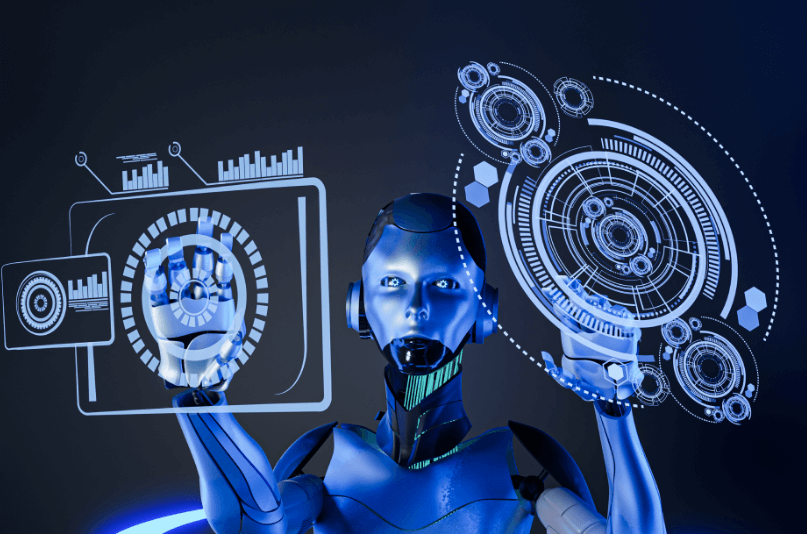
Generative AI in Creative Industries
The advent of generative AI has revolutionized creative industries, reshaping the way content is imagined, produced, and consumed. By leveraging advanced algorithms, machine learning, and neural networks, generative AI enables machines to create original content, from visual art and music to storytelling and product design. This innovation not only amplifies human creativity but also streamlines workflows, unlocking unprecedented possibilities across various sectors.
Understanding Generative AI
Generative AI refers to artificial intelligence systems capable of creating new data similar to the data on which they were trained. Unlike traditional AI, which focuses on recognizing patterns and making predictions, generative AI is designed to produce original outputs. This is achieved through models such as Generative Adversarial Networks (GANs) and Variational Autoencoders (VAEs). These models work by learning the underlying structures of datasets and then generating new, realistic, and often unique content.
Applications of Generative AI in Creative Fields
1. Visual Arts and Design
Generative AI has become a powerful tool in the world of visual arts and design. Tools like DALL·E and MidJourney allow artists to generate stunning images based on textual prompts, enabling rapid prototyping and creative experimentation. Graphic designers use AI to create logos, layouts, and branding materials. Generative design, powered by AI, has also been adopted in architecture and industrial design, producing optimized structures and products based on specific parameters.
2. Music Composition
In the music industry, generative AI assists composers by producing melodies, harmonies, and even complete compositions. Platforms like AIVA and OpenAI’s MuseNet analyze vast datasets of musical styles and genres to generate original pieces. These tools enable musicians to explore new creative directions, streamline the composition process, and customize soundtracks for specific projects.
3. Writing and Storytelling
Generative AI has transformed writing and storytelling, empowering authors, screenwriters, and marketers to craft compelling narratives. Language models like GPT-4 can create articles, scripts, and marketing copy tailored to specific audiences. These systems can mimic an author’s tone or explore new storytelling techniques, expanding creative possibilities while saving time.
4. Film and Animation
The film and animation industries have embraced generative AI to streamline production processes and enhance visual effects. AI can generate realistic backgrounds, animate characters, and simulate complex scenes, reducing the need for labor-intensive manual work. Tools like Runway ML are enabling filmmakers to experiment with AI-generated visual elements, pushing the boundaries of cinematic creativity.
5. Gaming
Generative AI has redefined game development by automating the creation of characters, environments, and storylines. Procedural content generation powered by AI ensures that players encounter unique experiences, such as dynamic landscapes or adaptive narratives, making games more immersive and engaging. Developers also use AI to create non-playable characters (NPCs) with realistic behaviors and dialogues.
6. Fashion and Product Design
In the fashion industry, generative AI helps designers create innovative patterns, fabrics, and garment prototypes. AI-driven tools analyze trends and customer preferences to suggest new designs that align with market demands. Product designers also benefit from generative design, which optimizes shapes and materials for functionality and aesthetics.
Benefits of Generative AI in Creative Industries
Generative AI amplifies creativity by offering fresh ideas and perspectives that may not have been conceived through traditional methods. It enhances productivity by automating repetitive tasks, allowing creators to focus on strategic and imaginative work. The technology also democratizes access to professional-grade tools, enabling emerging artists and small businesses to compete with established players. Additionally, generative AI fosters collaboration by serving as a creative partner that complements human intuition and expertise.
Challenges and Ethical Considerations
While generative AI offers immense potential, it also poses challenges and ethical concerns. The authenticity and originality of AI-generated content are frequently debated, particularly when AI mimics human styles. Copyright and intellectual property issues arise when determining ownership of AI-created works. There is also the risk of perpetuating biases embedded in training datasets, leading to content that unintentionally reinforces stereotypes. Transparency in the use of generative AI and adherence to ethical guidelines are essential to addressing these concerns.
Notable Examples of Generative AI in Action
Generative AI has already made significant impacts in various creative domains. Artists like Refik Anadol use AI to create immersive installations that explore data and human perception. In music, AI has been instrumental in creating genre-blending compositions for commercials and films. The fashion industry has seen brands like Tommy Hilfiger experimenting with AI-generated clothing designs. In literature, AI has co-authored novels and assisted marketers in crafting personalized campaigns.
The Future of Generative AI in Creative Industries
The future of generative AI lies in its ability to seamlessly integrate with human creativity. Hybrid systems that combine AI and human input will likely become the norm, enabling creators to refine AI outputs and imbue them with personal touches. Advancements in AI ethics and explainability will address current concerns about bias and authenticity, fostering trust in AI-generated content. Emerging technologies like quantum computing and advanced neural networks are expected to enhance the efficiency and complexity of generative AI systems.
How to Embrace Generative AI as a Creator
For creators looking to harness the power of generative AI, starting with accessible tools like Canva, DALL·E, or AIVA is a great entry point. Exploring online courses and tutorials can provide a deeper understanding of AI-driven workflows. Creators should view AI as a collaborator rather than a competitor, leveraging its capabilities to expand their creative horizons. By staying informed about industry trends and ethical considerations, creators can maximize the potential of generative AI while maintaining their unique artistic vision.
Conclusion
Generative AI is revolutionizing the creative industries by transforming how content is produced, personalized, and consumed. It serves as a catalyst for innovation, enabling creators to push boundaries and reimagine possibilities. While challenges remain, the opportunities offered by generative AI far outweigh its drawbacks, heralding a new era of collaboration between humans and machines. As the technology continues to evolve, its role in shaping the future of art, design, and storytelling will only grow, making it an indispensable tool for creative professionals across the globe.




